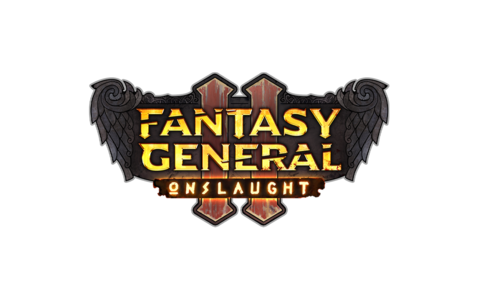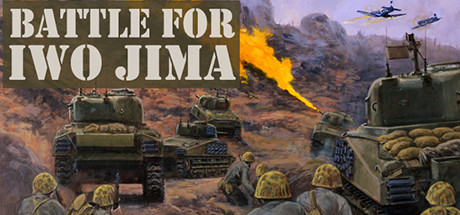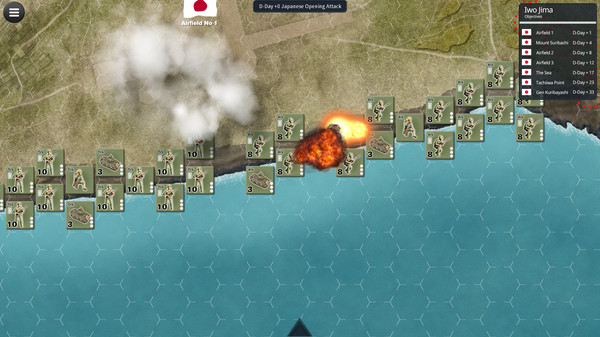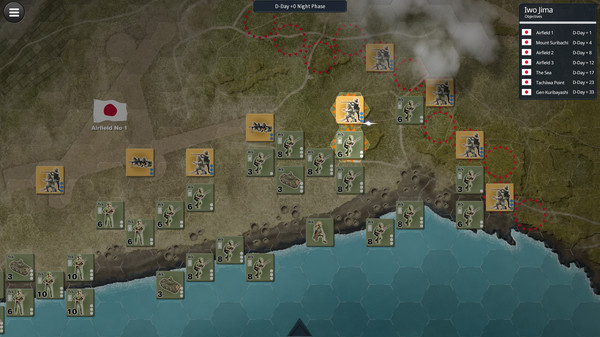
Last year saw the release of Fantasy General II, the more than two decades overdue follow up to the 90's classic. Slitherine and developer Owned by Gravity decided to revisit their iteration of the game just a little bit quicker. The Onslaught DLC brings two primary new features to the game. A significant of expansion of the air unit roster, and a new campaign that uses branching paths and procedural generation to offer a very replayable experience. There is also an extra mission slotted into the original campaign that will get you easier access to some of the new air units.
While the air units are fun, and I'll discuss them later, the primary reason most players will want to pick up this add on is the new campaign. Taking place after the events of the main story, this new campaign is shorter overall, but is meant to be played more than once. There are three heroes from the original story to choose from, each with a very different style. One uses the standard units from the main campaign, one uses lots of not-so-cuddly animal units, and the last focuses on hiring mercenary units from mission to mission. Each hero also of course has their own style of fighting on the battlefield. In addition to choosing your hero, during this campaign you'll be constantly choosing between different branching mission paths. The different missions will give unique rewards and also shape the story to some extent. This means that you could play through several times before you see every mission, and use a different roster of units each time.
The game recommends playing on "Iron Maiden" mode. One save file, no quicksaving or restarting missions. And, as I learned the hard way, letting your hero take one too many hits and die is an instant game over, forcing you to start from scratch. I enjoyed playing using this mode, as the procedurally generated missions here tend to play much more quickly than the missions of the original campaign. This comes with the sharp trade-off of losing all of the in-mission storytelling and events, as well as the more complex mission objectives. Most missions here are simple affairs, like moving your hero across the map, or capturing a handful of objectives. Even without any scripted surprises or side missions, the combat can still be unpredictable and interesting. The in-game world is in a state of chaos, with multiple factions fighting for control in the power vacuum left by the events of the main campaign. This is reflected by most maps in Onslaught having the potential for three-, and even four-way fights to break out between the various factions and neutral wildlife units wandering around the battlefield.
The story itself is not nearly as deep as last time, but still has its moments. Essentially, your hero of choice is having vivid dreams, drawing them to seek out a powerful artifact in the war-torn lands of the Empire. This prompts you to go on a merry goose chase around the game world, seeking one item after another and fighting with a wide variety of enemies. The story is the same regardless of which hero you choose, but the way you go about it can be quite different each time you play. There's always a choice between two or three missions which each have different goals and rewards, and may send you down a separate path for a while. Ultimately, you'll always arrive at the same key story moments, and the overall story itself story doesn't change all that much regardless of your choices. The story does have a couple of charming moments and fun characters, but for the most part is just there to provide context for the procedurally generated missions.
Besides the new campaign, Onslaught also greatly expands the roster of aerial units in the fray. In the base game there are some air units, but they are limited to just a few choices. Now there's a wide variety of flying fighters, including many flavors of giant eagles. These various units can act as general purpose flyers, interceptors, or bombers. Although these additions don't radically change the game, they do open up some new tactical options, especially the bomber eagles, which can fly out, attack, and return to safety in one turn. You'll also need to be prepared to defend against such tactics.
At the end of the day, Onslaught is a nice addition to game if you enjoyed the main story and want a fresh experience. The missions play quickly, getting you straight to the action and on to the next challenge. There's a good amount of replayability between the three heroes and the numerous choices of missions along the way. While the story feels like more of a glorified side-quest than an epic tale, it serves its purpose. If you want some more Fantasy General II in your life, Onslaught is an easy recommendation.
You can pick up Fantasy General II: Onslaught on Steam, GoG, or directly from Slitherine.
- Joe Beard

















































Follow Us